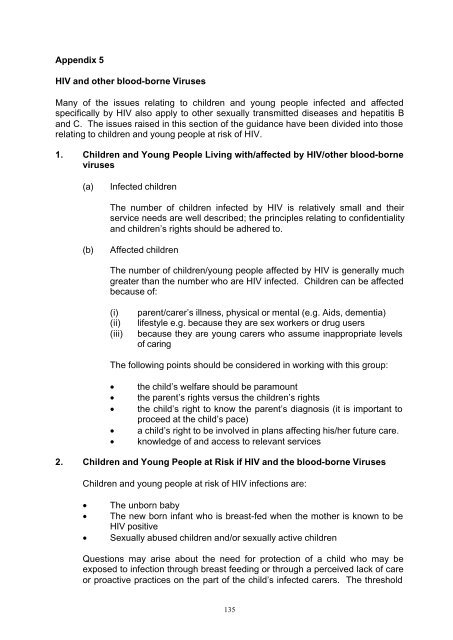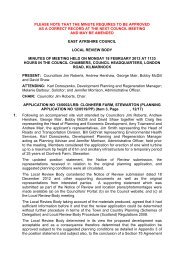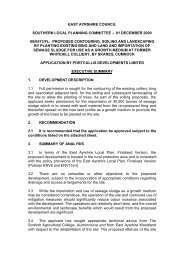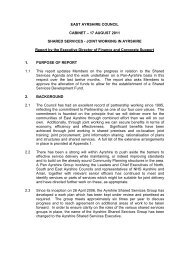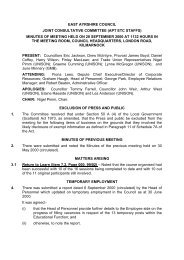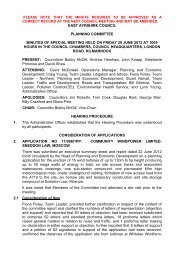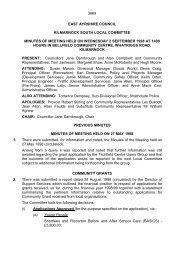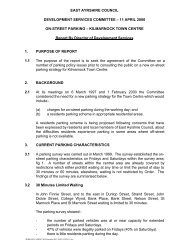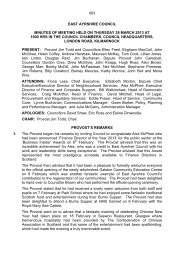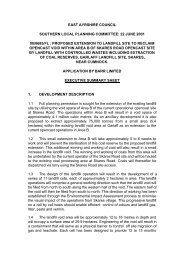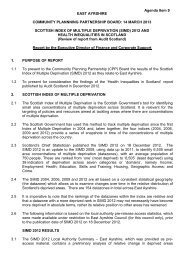Child Protection Procedures - East Ayrshire Council
Child Protection Procedures - East Ayrshire Council
Child Protection Procedures - East Ayrshire Council
Create successful ePaper yourself
Turn your PDF publications into a flip-book with our unique Google optimized e-Paper software.
Appendix 5<br />
HIV and other blood-borne Viruses<br />
Many of the issues relating to children and young people infected and affected<br />
specifically by HIV also apply to other sexually transmitted diseases and hepatitis B<br />
and C. The issues raised in this section of the guidance have been divided into those<br />
relating to children and young people at risk of HIV.<br />
1. <strong>Child</strong>ren and Young People Living with/affected by HIV/other blood-borne<br />
viruses<br />
(a)<br />
Infected children<br />
The number of children infected by HIV is relatively small and their<br />
service needs are well described; the principles relating to confidentiality<br />
and children’s rights should be adhered to.<br />
(b)<br />
Affected children<br />
The number of children/young people affected by HIV is generally much<br />
greater than the number who are HIV infected. <strong>Child</strong>ren can be affected<br />
because of:<br />
(i)<br />
(ii)<br />
(iii)<br />
parent/carer’s illness, physical or mental (e.g. Aids, dementia)<br />
lifestyle e.g. because they are sex workers or drug users<br />
because they are young carers who assume inappropriate levels<br />
of caring<br />
The following points should be considered in working with this group:<br />
• the child’s welfare should be paramount<br />
• the parent’s rights versus the children’s rights<br />
• the child’s right to know the parent’s diagnosis (it is important to<br />
proceed at the child’s pace)<br />
• a child’s right to be involved in plans affecting his/her future care.<br />
• knowledge of and access to relevant services<br />
2. <strong>Child</strong>ren and Young People at Risk if HIV and the blood-borne Viruses<br />
<strong>Child</strong>ren and young people at risk of HIV infections are:<br />
• The unborn baby<br />
• The new born infant who is breast-fed when the mother is known to be<br />
HIV positive<br />
• Sexually abused children and/or sexually active children<br />
Questions may arise about the need for protection of a child who may be<br />
exposed to infection through breast feeding or through a perceived lack of care<br />
or proactive practices on the part of the child’s infected carers. The threshold<br />
135


